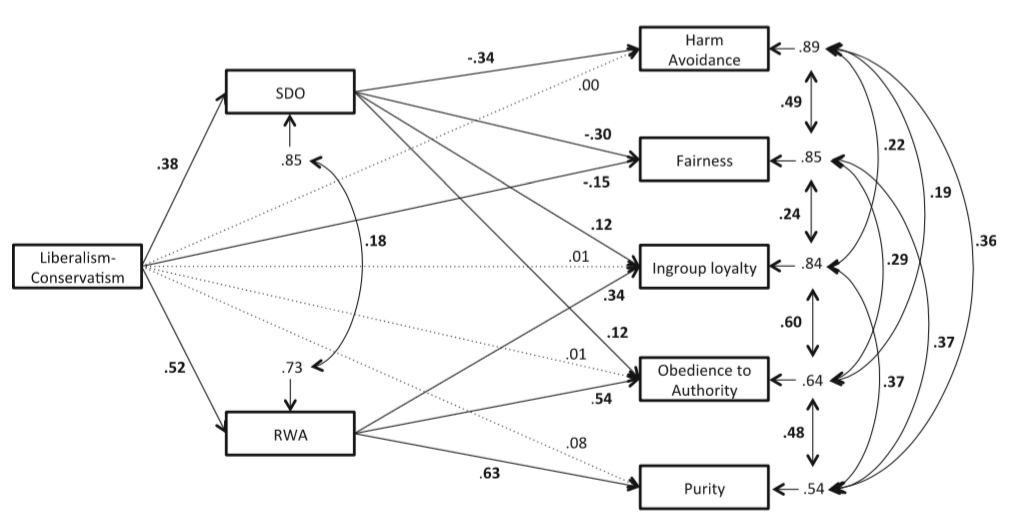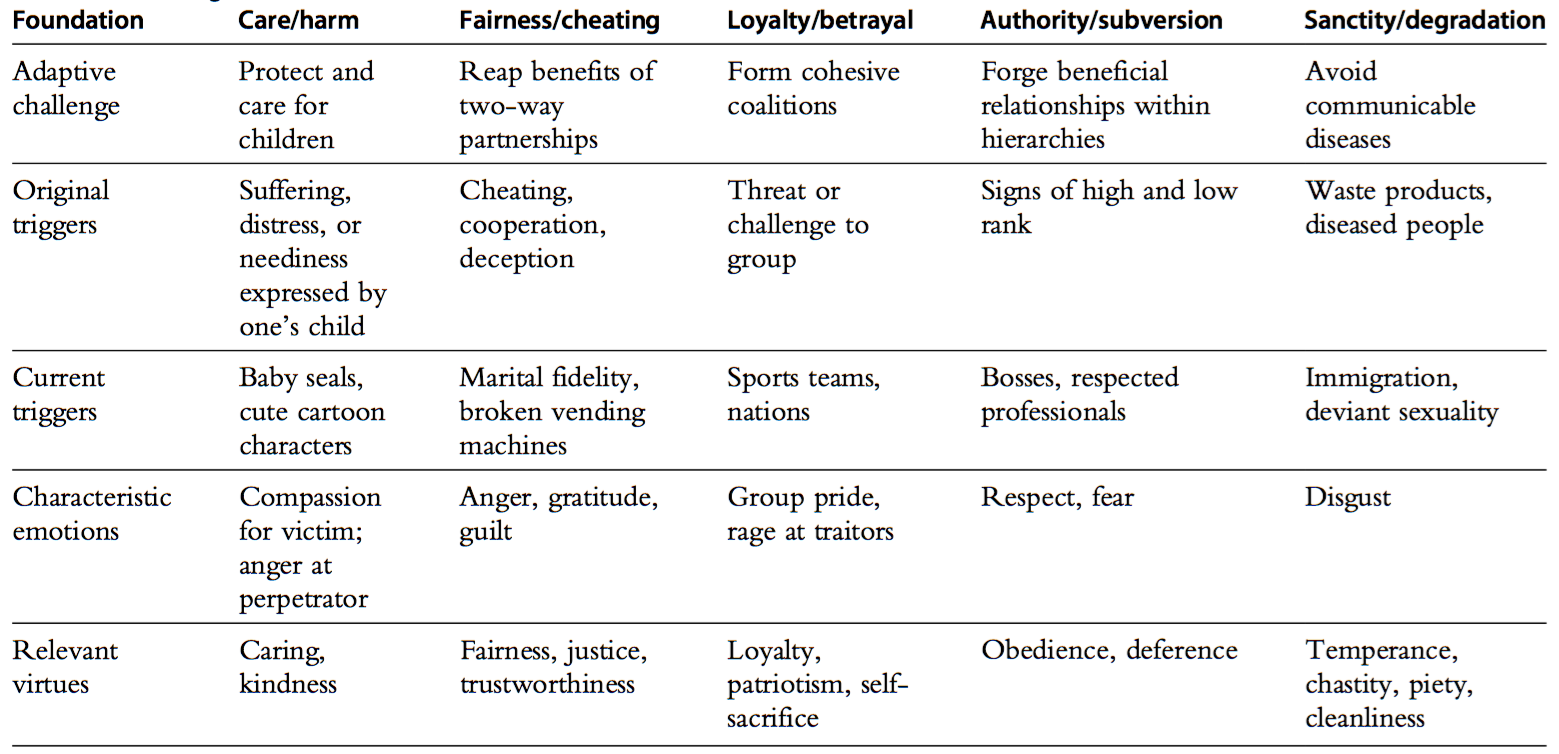Click here and press the right key for the next slide.
(This may not work on mobile or ipad. You can try using chrome or firefox, but even that may fail. Sorry.)
(If the slides don’t work, you can still use any direct links to recordings.)
also ...
Press the left key to go backwards (or swipe right)
Press n to toggle whether notes are shown (or add '?notes' to the url before the #)
Press m or double tap to slide thumbnails (menu)
Press ? at any time to show the keyboard shortcuts
Moral Foundations Theory: Empirical Objections

Graham et al, 2009 figure 1
The Joan-Lars-Joseph objection
The evidence on cultural variation says socially conservative participants tend to regard all five foundations as roughly equally morally relevant.
This does not generate the prediction that socially conservative participants will be more likely to view climate issues as ethical issues when linked on one foundation (e.g. purity) than when linked to another foundation (e.g. harm).

Kugler et al, 2014 figure 2
‘This article [distinguishes] between subjective conceptions of morality
(which are [...] indistinguishable from mere moralizing)
and
morality from a more independent, objective perspective’

Graham et al, 2013 table 2.1
Should we distinguish cultural variation from mere moralizing?
If so, how?
Is there even more conflicting research?
‘harm is central in moral cognition across moral diversity for both liberals and conservatives’
We found evidence for ‘a common dyadic template than with a specific number of distinct moral mechanisms that are differentially expressed across liberals and conservatives’
Schein & Gray, 2015 p. 1158
Is there yet more conflicting research?
Basic requirements
- internal validity (roughly, do answers to the three questions appear to reflect a single underlying tendency)
- Test–retest reliability (are you as an individual likely to give the same answers at widely-spaced intervals?)
- external validity (relation to other scales)
- measurement invariance [we’ll come to this later]
‘A finding of measurement invariance would provide more confidence that use of the MFQ across cultures can shed light on meaningful differences between cultures rather than merely reflecting the measurement properties of the MFQ’
Iurino & Saucier, 2018 p. 2
Does Moral Foundations Theory provide a model that is invariant?
Davies et al, 2014 : metric invariance for gender groups
(scalar invariance not tested)
Davis et al, 2014 : metric but not scalar invariance for Black vs White people
Dogruyol et al, 2019 : metric non-invariance for WEIRD/non-WEIRD samples
‘across subscales, there were problems with scalar invariance, which suggests that researchers may need to carefully consider whether this scale is working similarly across groups before conducting mean comparisons’
Davis et al, 2016 p. e27

Graham et al, 2009 figure 1
Are the differences in means measurement artefacts?
On balance, this seems likely.
There is a risk of building a theory on measurement artefacts.
‘entire literatures can develop on the basis of faulty measurement assumptions.’
Davis et al, 2017 p. 128
Stop.
On balance, MFT seems to be supported by a growing body of evidence.
Although limited, MFT is probably useful and there is no better alternative.